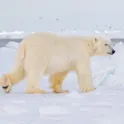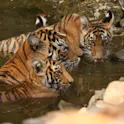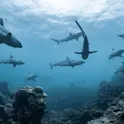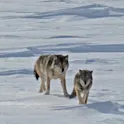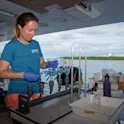Climate action
13 Sep 2022
Putting sharks on the map: a new standard to identify important, global habitats
By Tayyibah Aziz, science writer Image: Shutterstock Many existing marine protected areas fail to adequately consider the needs of sharks, rays, and chimaeras, as data about many species is limited. In a new publication, scientists have developed a new framework to consider the species’ biological and ecological needs and inform planning to secure the protection they desperately need in the face of extinction. To date, shark, ray, and chimaera species have not been sufficiently considered in the planning of marine protected areas. However, a publication in Frontiers in Marine Science by researchers from the International Union for Conservation of Nature (IUCN) Shark Specialist Group (SSC), IUCN’s Ocean Team, and the IUCN Marine Mammal Protected Areas Taskforce have developed a new framework to fundamentally change how sharks are considered in the design of protected areas and therefore support the protection they desperately need in the face of extinction. Ciaran Hyde, consultant to the IUCN Ocean Team, explained: “We still have so much to learn about many shark, ray, and chimaera species, but unfortunately several studies indicate that many protected areas are failing to adequately meet their needs. However, Important Shark and Ray Areas (ISRAs) will help to identify areas for these […]




